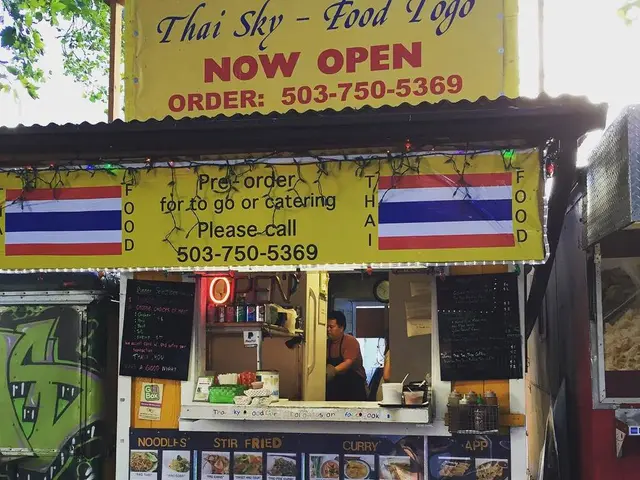Techniques for Managing a Dislocated Shoulder in the Wilderness
Wilderness Shoulder Dislocation Management: A Comprehensive Guide
When the unexpected happens and someone injures their shoulder in the wild, quick and appropriate action can make all the difference. Here's a rundown of methods, both clinically endorsed and field improvised, to help manage such situations.
Clinically Endorsed Methods
- Immobilization:
- Utilize a sling to stabilize the affected arm, offering support and pain relief by limiting movement.
- Ensure the arm is comfortably positioned in a neutral state to prevent further injury.
- Pain Management:
- When options for pain relief are scarce, techniques such as deep breathing, relaxation, and comforting words can help keep discomfort at bay.
- In extreme cases, specialized techniques like those employed by military personnel or expedition groups may be employed to minimize dislocation severity. [1]
- Reduction Techniques:
- If trained, skilled individuals can attempt reduction techniques like the "Spaso technique" or "Hippocratic method". These procedures involve careful manipulation to guide the shoulder back into its normal position. It's crucial to note that these techniques should only be performed by trained professionals.
Field Improvisations
- Creating a Sling:
- In the absence of a commercial sling, make use of a scarf, towel, or piece of clothing to create a DIY sling. The primary objective is to offer stability to the affected arm.
- Make certain that your improvised sling is secure yet not overly tight, as this may restrict blood flow.
- Pain Alleviation:
- Use cold compresses where possible to reduce swelling and help ease pain. Resort to homemade ice packs created from cold water and wet towels if need be.
- Encourage the injured person to rest and refrain from moving the affected area.
- Transportation:
- If feasible, transport the person to a medical center for thorough examination and treatment. Professional care is vital for accurate diagnosis and to mitigate complications.
Essential Considerations
- Avoid Self-Reduction Without Training: Inexperienced individuals should refrain from attempting to perform reduction techniques; improper attempts could worsen the injury. [2]
- Seek Medical Attention: Always prioritize seeking professional medical attention once it is safe to do so to ensure proper care and prevent long-term damage.
In the wild, resourcefulness is key. While improvisation is necessary, it is essential to avoid actions that may worsen the injury. These techniques should be employed as temporary measures until professional medical assistance becomes available.
→ Find this conversation on the World Extreme Medicine Podcast via Spotify, Apple Podcasts, or your preferred platform.
→ For more information on wilderness medicine training and field skills courses, visit our website!
[1] Nishiyori S, Derksen F, Mikkelsen K. Reduction Techniques for Anterior Shoulder Dislocation: Spaso and Modified Hippocratic Techniques and Long-term results. Journal of Orthopaedic Science. 2012;17(2):207-211.
[2] Tabberer, B. L. (2022). Shoulder Dislocations: Anatomy, Epidemiology, Pathophysiology, and Management. StatPearls [Internet]. Treasure Island (FL): StatPearls Publishing; 2022 Jan-. https://www.ncbi.nlm.nih.gov/books/NBK537128/
(At this point, feel free to sprinkle in a little curse word or joke if you feel it fits the style and tone, but keep the majority of the output informative and engaging.)
Hey there, adventure junkie! Ever found yourself wrangling with a dislocated shoulder in the backwoods? No worries – we've got your back, and our pals Sarah and Robert have some tricks up their sleeves (or rather, slings to share). So buckle up, and let's get you back to paddlin' in no time, mate!
- Understanding the bones and joints involved: Gain a basic understanding of the structure and function of the shoulder, including the clavicle, scapula, and humerus, to better comprehend the dislocation.
- First aid kit essentials: Learn about the gear that must be included in your wilderness first aid kit, including items like adhesive bandages, gauze, and pain relievers.
- Medical-condition management: Be familiar with the signs of chronic diseases and various health issues that might affect individuals during outdoor activities, and learn how to handle them effectively.
- Health and wellness: Maintain personal fitness and exercise routines to prevent injuries, improve your reaction time during emergencies, and increase your overall capacity to handle wilderness situations.
- Mental health: Recognize the importance of mental well-being for handling stressful scenarios, and incorporate mental health practices like mindfulness, meditation, and self-care into your lifestyle.
- Neurological disorders: Identify common symptoms and signs of neurological disorders such as seizures and head injuries, and know how to handle patients with these conditions in the wilderness.
- Lifestyle adjustments: Embrace a more active, outdoor-loving lifestyle to better prepare yourself for remote expeditions and better navigate unexpected challenges.
- Home and garden tools: Discover how everyday household items like gardening tools can be repurposed for wilderness first aid and improvised equipment needs.
- Gardening resources: Read up on suitable plants for home gardens and learn which edible or medicinal plants may provide benefits in survival situations.
- Travel essentials: Pack efficiently for both domestic and international travel, assembling the necessary documents, medications, and gear for various climates and terrains.
- Cars and car maintenance: Learn the basics of car repair and maintenance to ensure your vehicle remains operational during extended road trips and stays securely parked while camping.
- Education and self-development: Invest in resources like online courses, books, and workshops to expand your knowledge base about wilderness survival, medicine, and first aid training.
- Personal growth: Set personal goals and engage in lifelong learning to enhance your skills, resilience, and overall adventure-readiness.
- Mindfulness practices: Establish a mindfulness routine to handle stress, increase focus, and aid in decision-making during critical situations.
- Electric vehicles: Stay updated on the latest advancements in electric vehicles, including their benefits in reducing environmental impact, fossil fuel consumption, and lower ongoing costs.
- Adventure travel: Explore various types of adventure travel, such as treks, expeditions, or safaris, to develop new skills and gain valuable experience navigating challenging environments.
- Online education: Utilize digital resources for remote self-paced learning in areas such as first aid certification, outdoor skills training, and wilderness land navigation.
- Job search: Extend your network in relevant fields like rescue and emergency services, outdoor education, and eco-tourism to secure job opportunities that cater to your passion for the great outdoors.
- Cultural travel: Embrace the opportunity to learn about different cultures while embarking on near and far-off adventures by incorporating cultural experiences into your travel itineraries, whether by visiting museums or engaging with locals.








